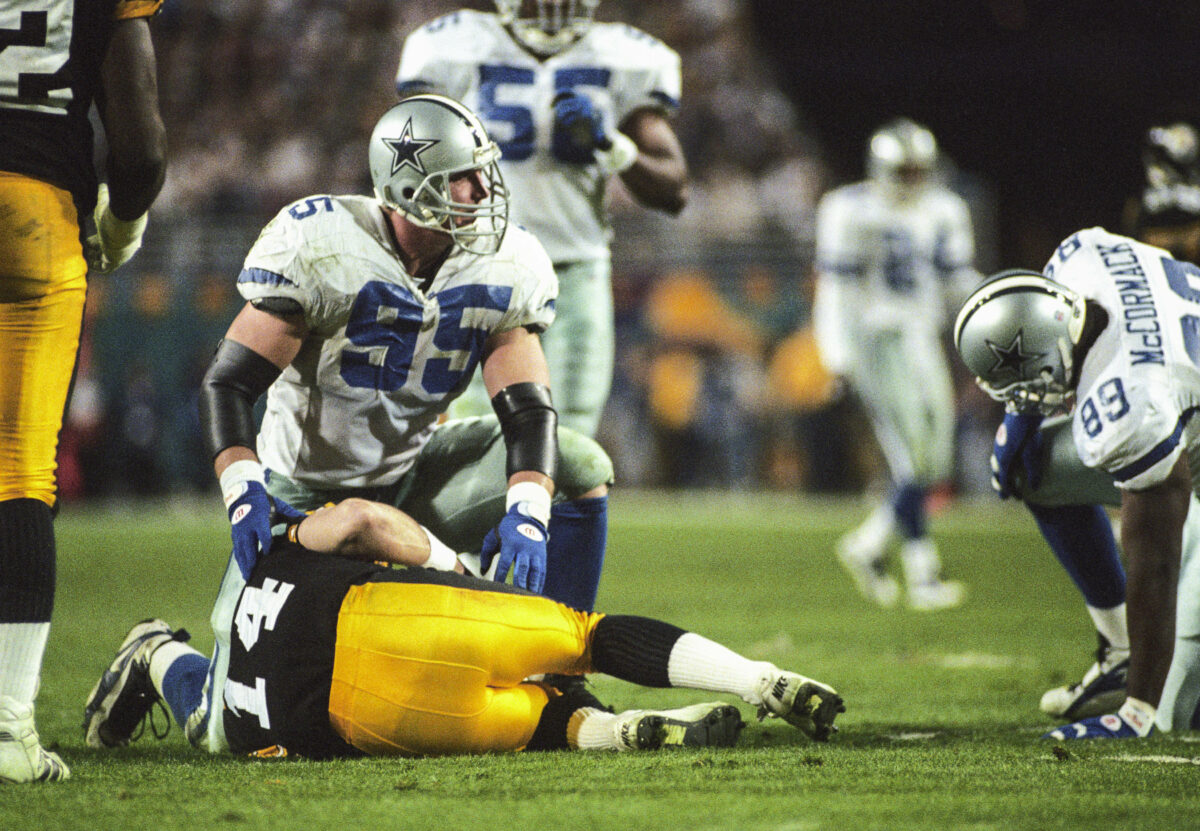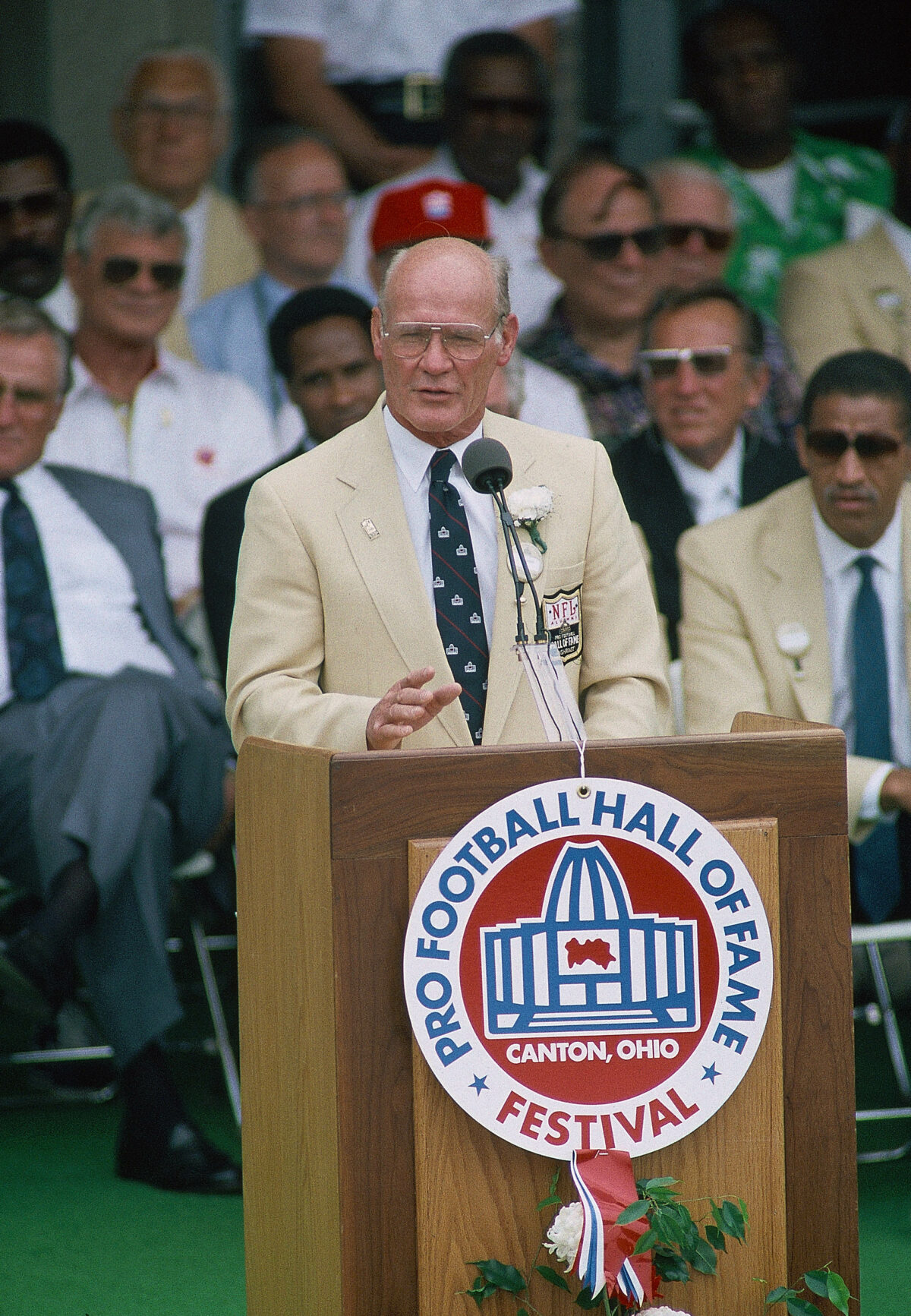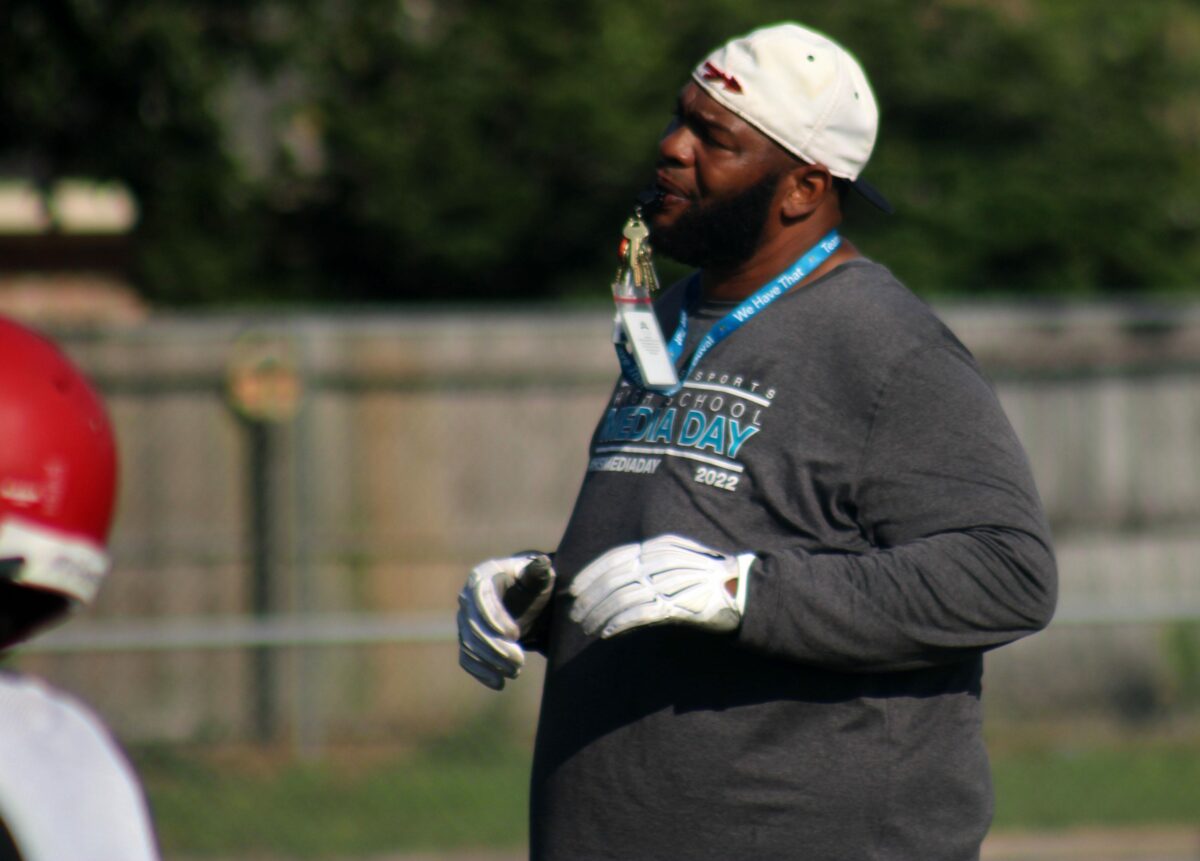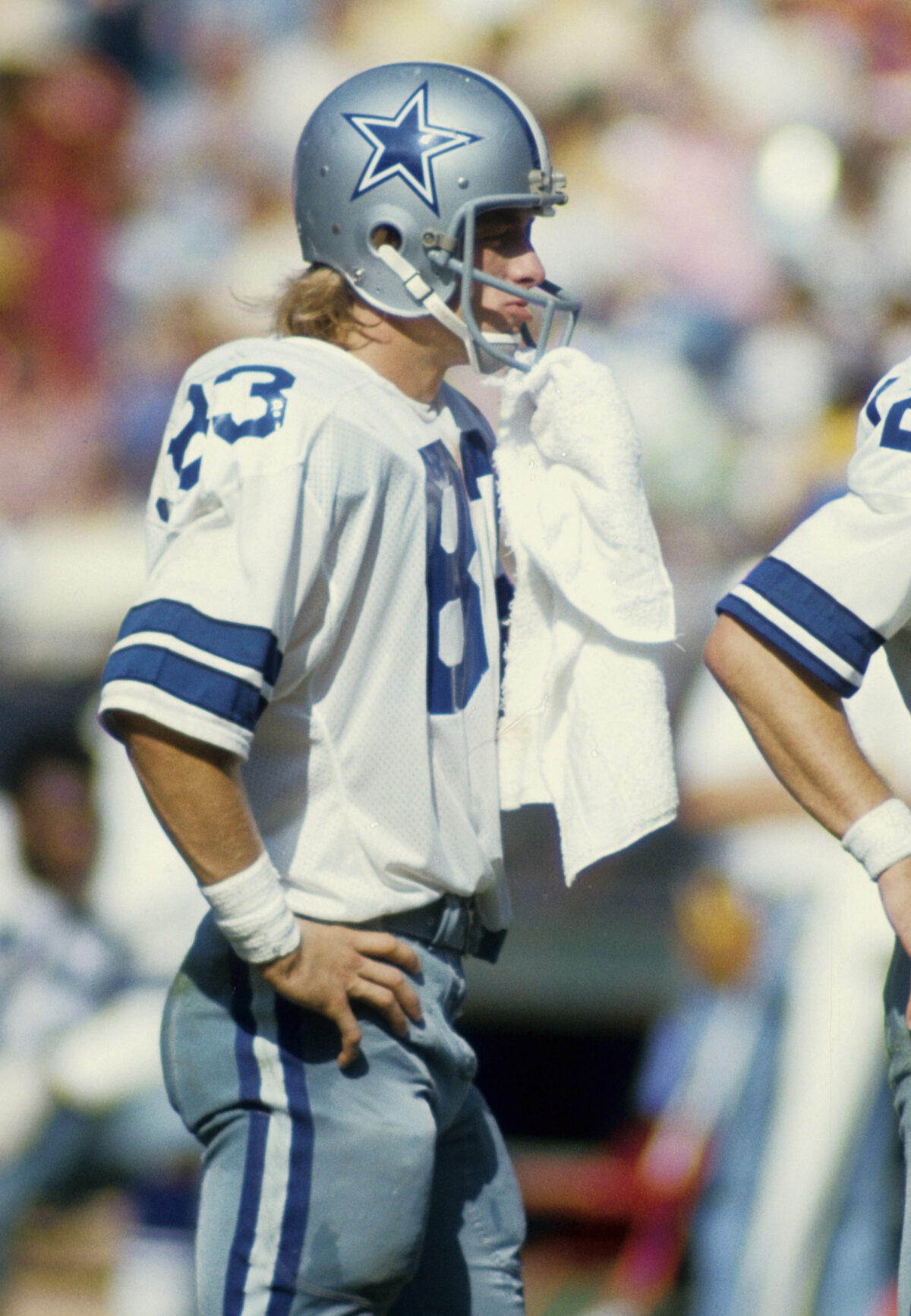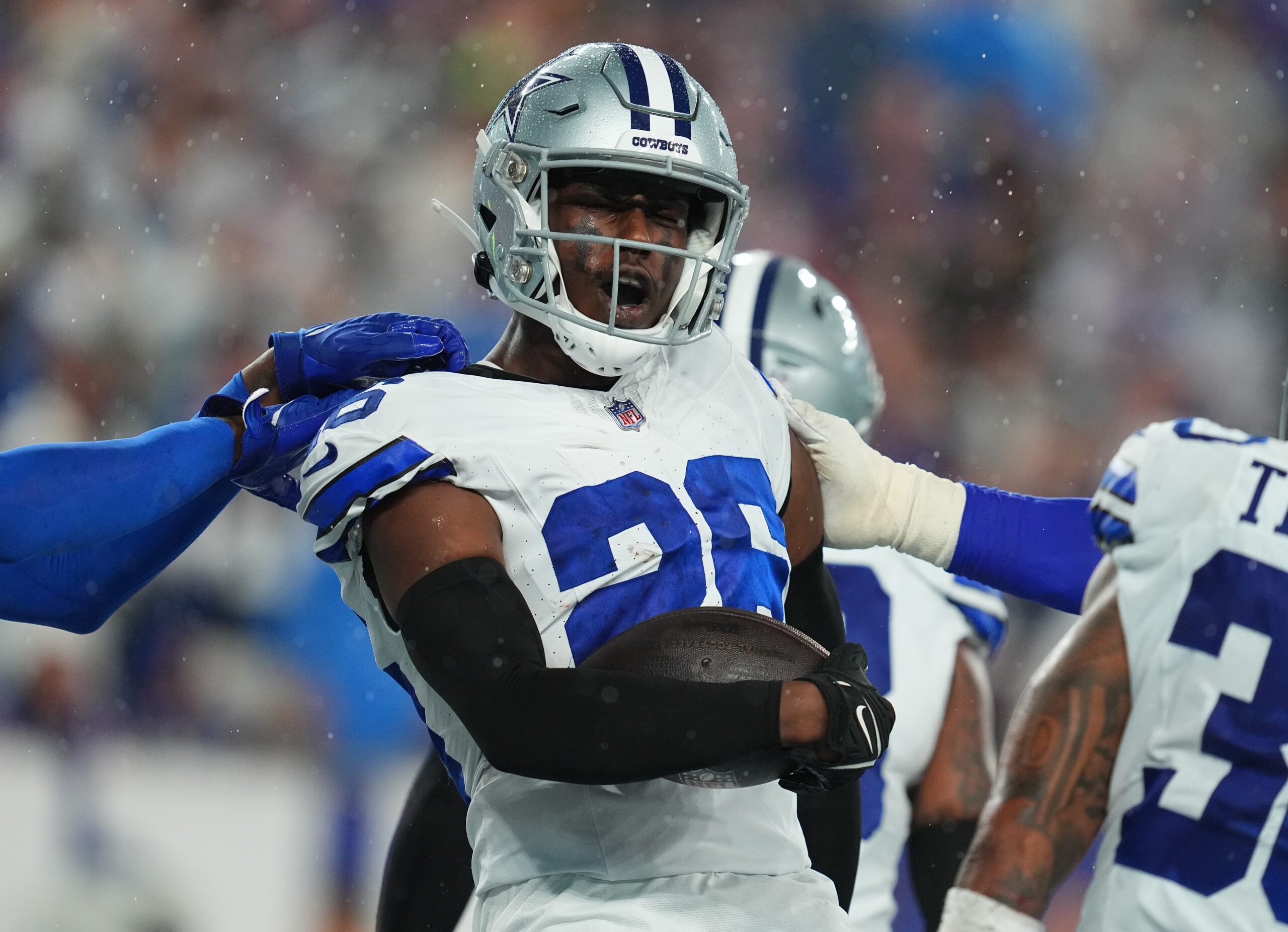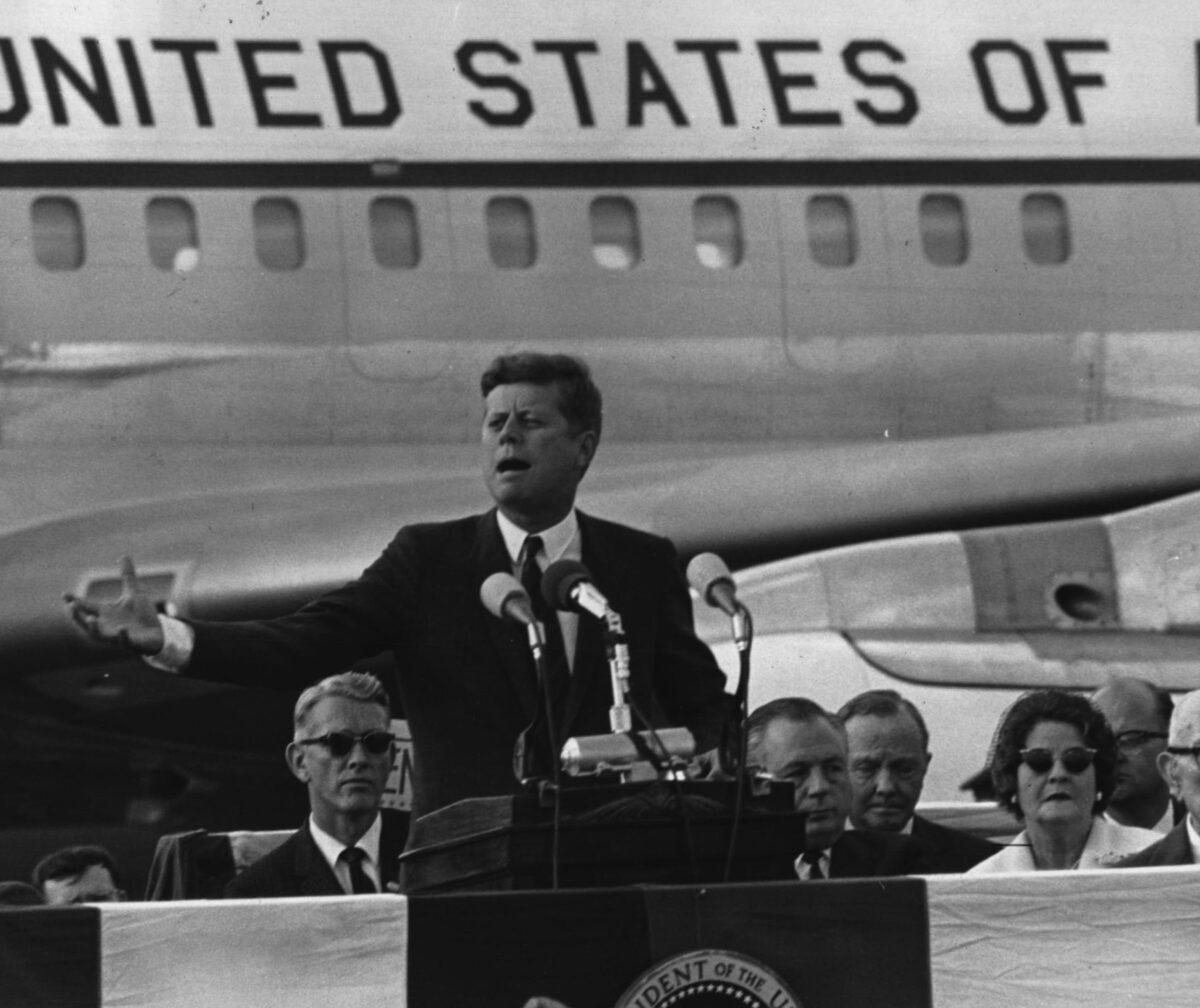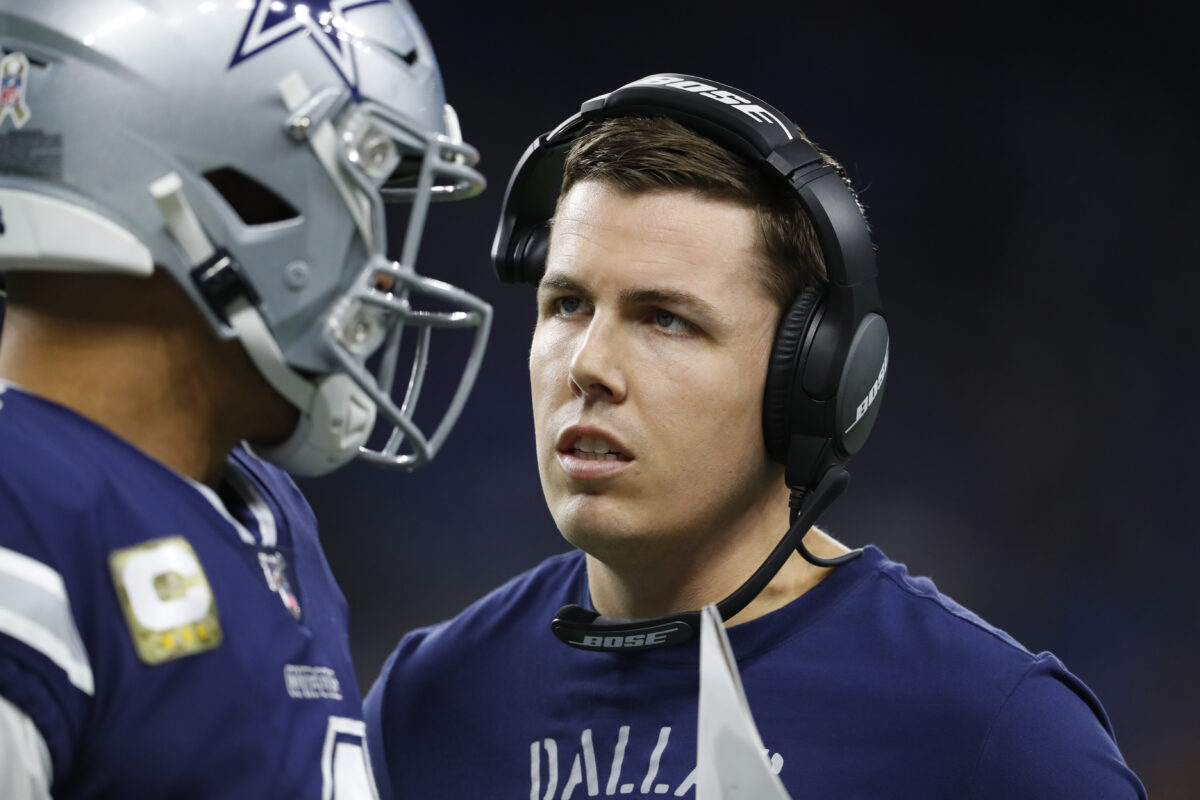Apart from the satin jacket Post Malone was sporting from the luxury suites at Allegiant Stadium, Super Bowl LVIII was awfully thin for Cowboys fans hoping their team might catch some stray shout-outs.
But the game’s first touchdown (and the only touchdown until late in the third quarter) did dig up an all-but-forgotten asterisk that recalled one of the most memorable plays in the history of America’s Team… that was also made on the biggest stage of them all… and also by a rather unlikely character.
After a scoreless first quarter and toward the end of a mostly dull second frame that featured a long field goal as the lone highlight, the 49ers found themselves knocking on the door of the red zone. On 2nd-and-10, quarterback Brock Purdy turned and ripped a lateral dart to wide receiver Juaun Jennings, who had retreated nearly 10 full yards to collect the pass. Jennings used that cushion- and just enough blocking from his teammates- to lob the ball back across the field to running back Christian McCaffrey, who streaked 27 yards into the end zone.
The pass from Jennings was his first attempt as a pro. His last throw came in 2016 while at the University of Tennessee, a 4-yard connection to Joshua Dobbs versus Texas A&M.
CBS play-by-play man Jim Nantz pointed out of Jennings’s rainbow, “It felt like it took forever to get there.” Sidekick Tony Romo added, “It was scary.”
Unexpected, too, in the moment. But the Super Bowl, especially in recent years, has actually become the testing ground for wild and wacky play calls- especially, it seems, for random players chucking the rock around for scores.
The play marked the third time a non-quarterback has tossed a touchdown pass in the past seven Super Bowls and just the sixth time it’s ever happened in the big game.
The man who founded that exclusive club? None other than Cowboys fullback Robert Newhouse. In January of 1978, his 29-yard touchdown throw to wide receiver Golden Richards served as the dagger to seal a championship victory win over Denver and made Newhouse the first non-quarterback to ever throw for a touchdown in a Super Bowl.
Newhouse was perhaps the last man the Broncos would have thought of as a deep passing threat. Already a six-year veteran when that Super Bowl XII contest in New Orleans kicked off, the 5-foot-10-inch bruiser with the famed 44-inch thighs had started his NFL career getting minimal work behind ballcarriers Calvin Hill and Walt Garrison. He put together a 930-yard rushing season in 1975 but then saw his touches decrease once Tony Dorsett joined the team in 1977.
As for letting him put the ball in the air, Dallas had tried it just twice before. Over the first three weeks of the 1975 season, Newhouse went 1-for-2 passing. And although one of those attempts did go for a 46-yard touchdown to Drew Pearson, the Cowboys didn’t try a halfback pass again for their next 45 games (including playoffs).
Some of Newhouse’s teammates didn’t believe head coach Tom Landry should go back to it at all, based on how the play had looked in practice leading up to Super Bowl XII.
For starters, the play was designed to be run to Newhouse’s right, making a more natural throw for the right-handed back.
“We ran it to his right 10 times, which is a lot easier, and he went 0-for-10,” remembered Cowboys exec Gil Brandt. “He threw the ball wide, short, underthrown like you couldn’t imagine, sideways, it was a disaster. There was no way Tom was calling that play, never mind to his left.”
But Landry did call the play, with just over seven minutes remaining in the game. The Cowboys had just recovered a Broncos fumble at the Denver 29. With the score 20-10, one more touchdown would almost assuredly put the game out of reach. And Landry called Newhouse’s number.
“When Tom called the play, I said, ‘I can’t believe he called this play,'” Newhouse once stated. “I was nervous about throwing the ball. In practice the ball had been wobbling, but Danny [White, Cowboys backup quarterback] told me to get my hip around it. I kept thinking about that when I got the ball.”
Newhouse was so unprepared to pass that he had previously covered his hands in Stickum. Dorsett had gone down with a knee injury earlier, leaving Newhouse to take over in the backfield, and he wanted to be sure he didn’t fumble.
But with a halfback-option play coming, the now-banned gluelike goo was going to be a problem.
“I was shocked. I panicked,” Newhouse would say later. “I’ve never eaten so much Stickum in my life. I started wiping it off my pants and started licking my fingers.”
Once in the huddle, Newhouse could be seen wiping his hands on teammates’ towels and even loosening his arm and cracking his knuckles in preparation for his big pass.
“We were working on that play for two weeks, and ‘House didn’t throw a spiral once,” safety Charlie Waters said. “I’m honestly not sure I ever saw him throw a spiral before that pass in the Super Bowl. He threw wounded ducks. But he was a gamer, an absolute gamer.”
Quarterback Roger Staubach took the snap and immediately pitched it to Newhouse, who took a long backward angle on his run to the left side. He had good blocking- perhaps because half the Broncos defense had also seen him prepping to throw while in the huddle and had backtracked into coverage- and floated a high, arcing, even “scary” bomb to Richards.
Denver cornerback Steve Foley was actually in good position downfield, but Newhouse’s pass was perfect. Richards snatched the ball away from Foley’s outstretched hands, and the Cowboys’ second world title was all but secured.
[affiliatewidget_smgtolocal]
Newhouse would play another six seasons- all in Dallas- but he would never attempt another pass in the NFL.
The first non-quarterback to throw a touchdown pass in a Super Bowl was also the first former Cowboys player to be brought back to the organization by Jerry Jones after he purchased the team in 1989. A universally-loved personality, he worked for several years in the team’s player relations department. Robert Newhouse passed away of heart disease in 2014 at the age of 64.
[lawrence-auto-related count=3]
[mm-video type=video id=01hpe2gfe69ct1tnc62c playlist_id=01eqbwens7sctqdrqg player_id=none image=https://images2.minutemediacdn.com/image/upload/video/thumbnail/mmplus/01hpe2gfe69ct1tnc62c/01hpe2gfe69ct1tnc62c-dcdd2493e698f22fcdf58dbc59d5d765.jpg]
[lawrence-newsletter]
